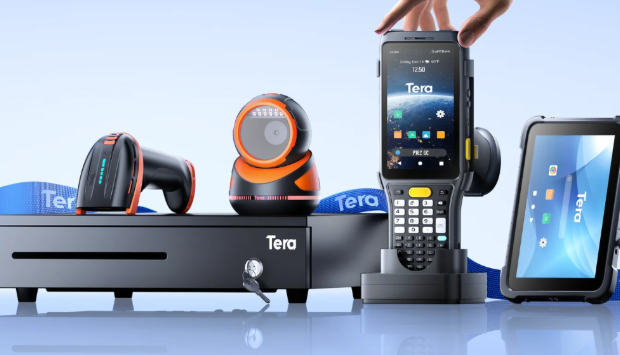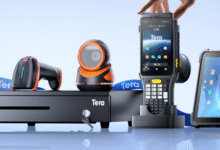The Essential Role of Tera Barcode Scanners in Retail and Logistics

In modern commerce, barcodes are a fundamental element of efficiency. They appear on nearly every product, streamlining operations from the cash register to the warehouse floor. These simple black-and-white lines hold crucial data, and barcode scanners are the key to unlocking it. For businesses in retail and logistics, the right barcode scanning technology is not just a convenience; it is a cornerstone of productivity, accuracy, and growth.
Tera barcode scanners provide the robust and reliable solutions necessary to meet the demanding pace of these industries. By translating barcode data into actionable information, these devices empower businesses to track products, accelerate transactions, and minimize costly errors. Understanding their function reveals their immense value in optimizing complex supply chains and enhancing the customer experience.
The Core Functionality of Barcode Scanning Technology
While the process seems instantaneous, barcode scanning involves a coordinated sequence of steps. This technology is built on a foundation of light, sensors, and decoders that work together to convert a visual pattern into digital data that a computer system can understand.
How Barcode Scanners Work
The fundamental workflow of a barcode scanner is a simple yet elegant process. It begins when the device emits a light source, typically a laser or LED, onto a barcode. The white spaces in the code reflect this light, while the black bars absorb it. This contrast creates a unique pattern of reflected light.
A sensor within the scanner captures this reflected pattern. For one-dimensional (1D) barcodes, the sensor detects variations in light intensity corresponding to the bars and spaces. For two-dimensional (2D) barcodes like QR codes, an image-based sensor captures a complete picture of the code. A built-in decoder then interprets this pattern or image, translating it into readable text or numbers, and transmits the data to a connected system.
Key Components of a Reliable Scanner
Several critical components enable this process. The light source illuminates the barcode, while a lens focuses the reflected light onto the sensor for a clear reading. The sensor converts the light into an electrical signal, which the decoder then processes into usable alphanumeric characters.
The communication interface, whether a wired USB connection or a wireless Bluetooth signal, sends this final data to a point-of-sale system, computer, or inventory database. Finally, these components are protected by durable housing, which is especially important for industrial scanners designed to withstand the harsh conditions of a warehouse or factory.
Driving Efficiency in Retail and Logistics
The primary advantage of implementing barcode scanners is the dramatic improvement in operational efficiency. In both customer-facing retail environments and fast-paced logistics hubs, speed and precision are paramount. Manual data entry is slow and notoriously prone to human error, leading to significant downstream problems.
The Impact on Retail Operations
In a retail setting, barcode scanning transforms the checkout process. Transactions are completed in seconds, reducing queue times and improving customer satisfaction. This technology also ensures pricing accuracy, as the scanned price is pulled directly from a central database.
Beyond the checkout counter, scanners are vital for inventory management. Staff can quickly perform stock counts, process returns, and manage shelf replenishment. This real-time data visibility helps prevent stockouts of popular items and avoid overstocking less-demanded goods, leading to smarter purchasing decisions.
Transforming Logistics and Warehouse Management
For logistics and warehouse operations, Tera barcode scanners are indispensable tools. They streamline every stage of the supply chain, from receiving incoming shipments to picking, packing, and dispatching orders. Each scan updates inventory records instantly, providing an accurate, real-time view of stock levels and locations.
This automation significantly reduces errors in order fulfillment, ensuring the correct items are sent to the right customers. The increased speed and accuracy lead to higher productivity, lower labor costs, and a more efficient supply chain. Without effective barcode scanning, modern logistics would be unable to handle the sheer volume and complexity of today’s market.
Selecting the Right Tera Barcode Scanner
Choosing the appropriate scanner is crucial for maximizing its benefits. The ideal device depends on the specific environment and the types of barcodes being used. Tera provides a diverse range of scanners designed to meet the unique needs of different industries.
Understanding Different Scanner Types
Handheld scanners, available in both wired and wireless models, are the most common type and offer flexibility for retail and light warehouse tasks. For high-volume checkouts, presentation scanners allow for hands-free operation. In more demanding environments, industrial-grade scanners are essential.
The choice between 1D and 2D capability is also important. While 1D scanners are sufficient for reading traditional product codes, 2D scanners are required for more complex matrix barcodes like QR codes. These are increasingly used for ticketing, mobile payments, and advanced logistics tracking.
A Focus on Durability and Performance
In warehouses, factories, and outdoor logistics settings, durability is non-negotiable. Tera’s industrial scanners are designed with rugged, IP-rated casings that protect them from dust, water, and repeated drops. This robust construction ensures that the scanners remain reliable even in the most challenging conditions.
Superior quality control guarantees that every device meets high standards for performance and safety. This focus on building durable, high-performance tools ensures that businesses can depend on them for mission-critical tasks without fear of interruption from equipment failure.
Advanced Solutions for Modern Supply Chains
As technology evolves, so do the capabilities of barcode scanners. The latest innovations are designed to provide even greater data integration and mobility, further optimizing the modern supply chain.
The Rise of Mobile Computing
The evolution of scanning technology has moved beyond simple data capture. Advanced devices now integrate scanning capabilities with full-fledged operating systems. A mobile computer functions as a handheld computer, allowing workers in a warehouse or on a delivery route to not only scan items but also access inventory software, update records, and communicate in real time. This all-in-one functionality is revolutionizing mobile workforce management in logistics.


